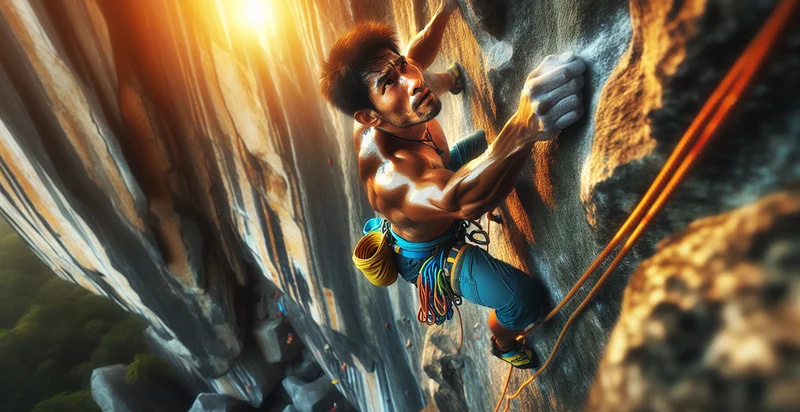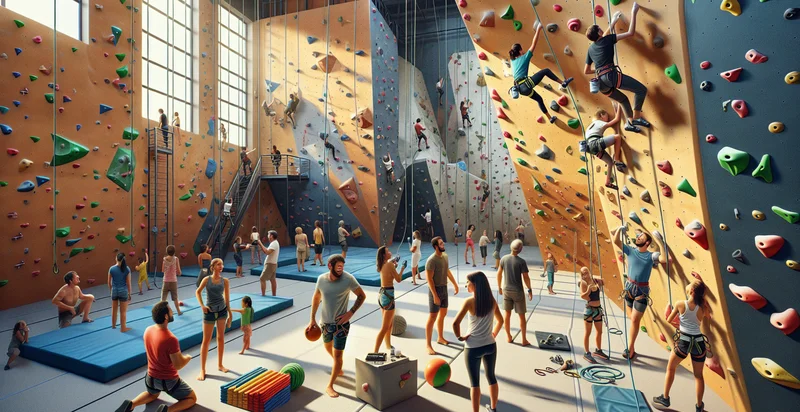Identify if someone is rock climbing
using AI
Below is a free classifier to identify if someone is rock climbing. Just upload your image, and our AI will predict if someone is rock climbing - in just seconds.

Contact us for API access
Or, use Nyckel to build highly-accurate custom classifiers in just minutes. No PhD required.
Get started
import nyckel
credentials = nyckel.Credentials("YOUR_CLIENT_ID", "YOUR_CLIENT_SECRET")
nyckel.invoke("if-someone-is-rock-climbing", "your_image_url", credentials)
fetch('https://www.nyckel.com/v1/functions/if-someone-is-rock-climbing/invoke', {
method: 'POST',
headers: {
'Authorization': 'Bearer ' + 'YOUR_BEARER_TOKEN',
'Content-Type': 'application/json',
},
body: JSON.stringify(
{"data": "your_image_url"}
)
})
.then(response => response.json())
.then(data => console.log(data));
curl -X POST \
-H "Content-Type: application/json" \
-H "Authorization: Bearer YOUR_BEARER_TOKEN" \
-d '{"data": "your_image_url"}' \
https://www.nyckel.com/v1/functions/if-someone-is-rock-climbing/invoke
How this classifier works
To start, upload your image. Our AI tool will then predict if someone is rock climbing.
This pretrained image model uses a Nyckel-created dataset and has 2 labels, including Not Rock Climbing and Rock Climbing.
We'll also show a confidence score (the higher the number, the more confident the AI model is around if someone is rock climbing).
Whether you're just curious or building if someone is rock climbing detection into your application, we hope our classifier proves helpful.
Related Classifiers
Need to identify if someone is rock climbing at scale?
Get API or Zapier access to this classifier for free. It's perfect for:
- Safety Monitoring: The rock climbing identifier can be integrated into safety monitoring systems to detect climbers in real-time during outdoor or indoor climbing activities. This use case enhances the safety of climbers by alerting safety personnel if someone is at risk, such as falling or being in a dangerous position.
- Insurance Risk Assessment: Insurance companies can utilize the climbing identifier to accurately assess risk levels associated with various climbing activities. By analyzing the frequency and context of climbing events, insurers can tailor their policies and pricing based on actual risk exposure.
- Fitness and Performance Tracking: Fitness applications can leverage the climbing identifier to track and analyze climbers' performance metrics over time. By recognizing climbing sessions, apps can provide targeted workouts, strength assessments, and improvement feedback to users, enhancing their climbing skills.
- Event Planning and Management: Climbing competitions and events can benefit from the identifier by streamlining participant tracking and scoring. Organizers can ensure that all climbers are accounted for during events and can provide real-time updates on performance rankings.
- Environmental Impact Assessment: Environmental researchers can utilize the climbing identifier to monitor human activity in sensitive climbing areas. This data can help assess the impact of climbing on local ecosystems and inform conservation strategies to protect endangered species and habitats.
- Personalized Climbing Experiences: Climbing gyms can implement this identifier in their systems to create personalized experiences for climbers. By recognizing individual climbers, gyms can offer customized training programs, challenges, and social opportunities, enhancing customer satisfaction.
- Marketing and Promotions: Outdoor gear companies can partner with climbing identifier technology to target advertising to climbers. By tracking climbing activities, businesses can deliver timely promotions or product recommendations to consumers based on their climbing habits and preferences.


